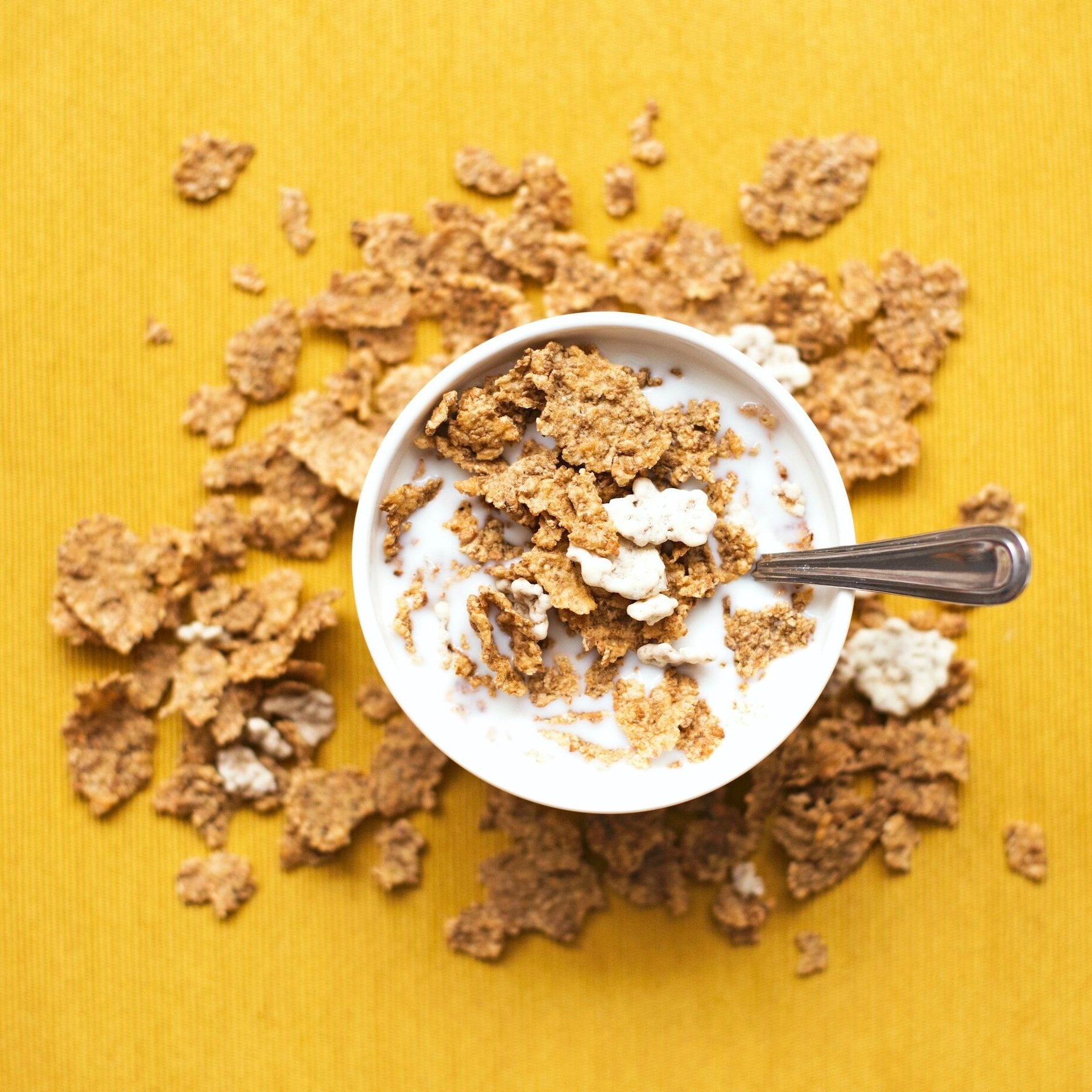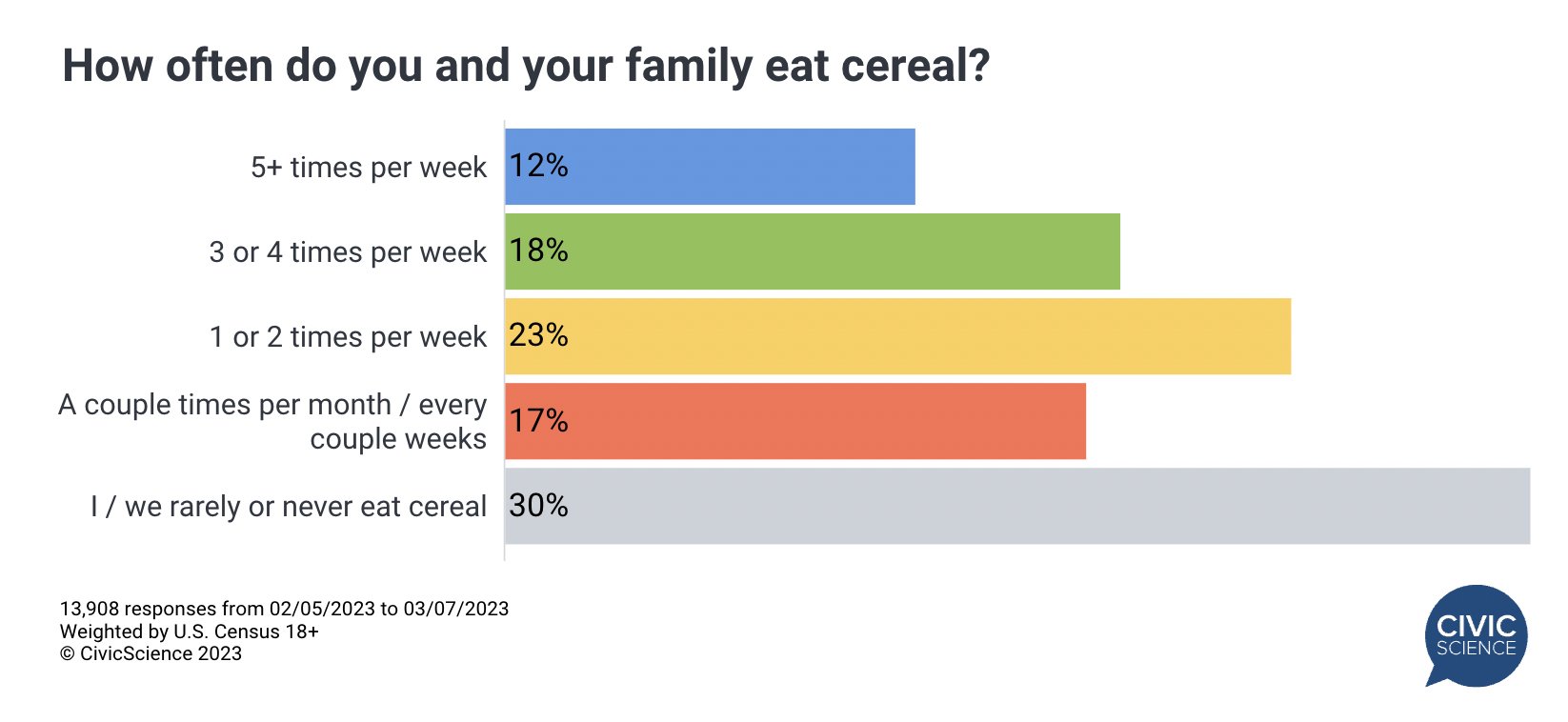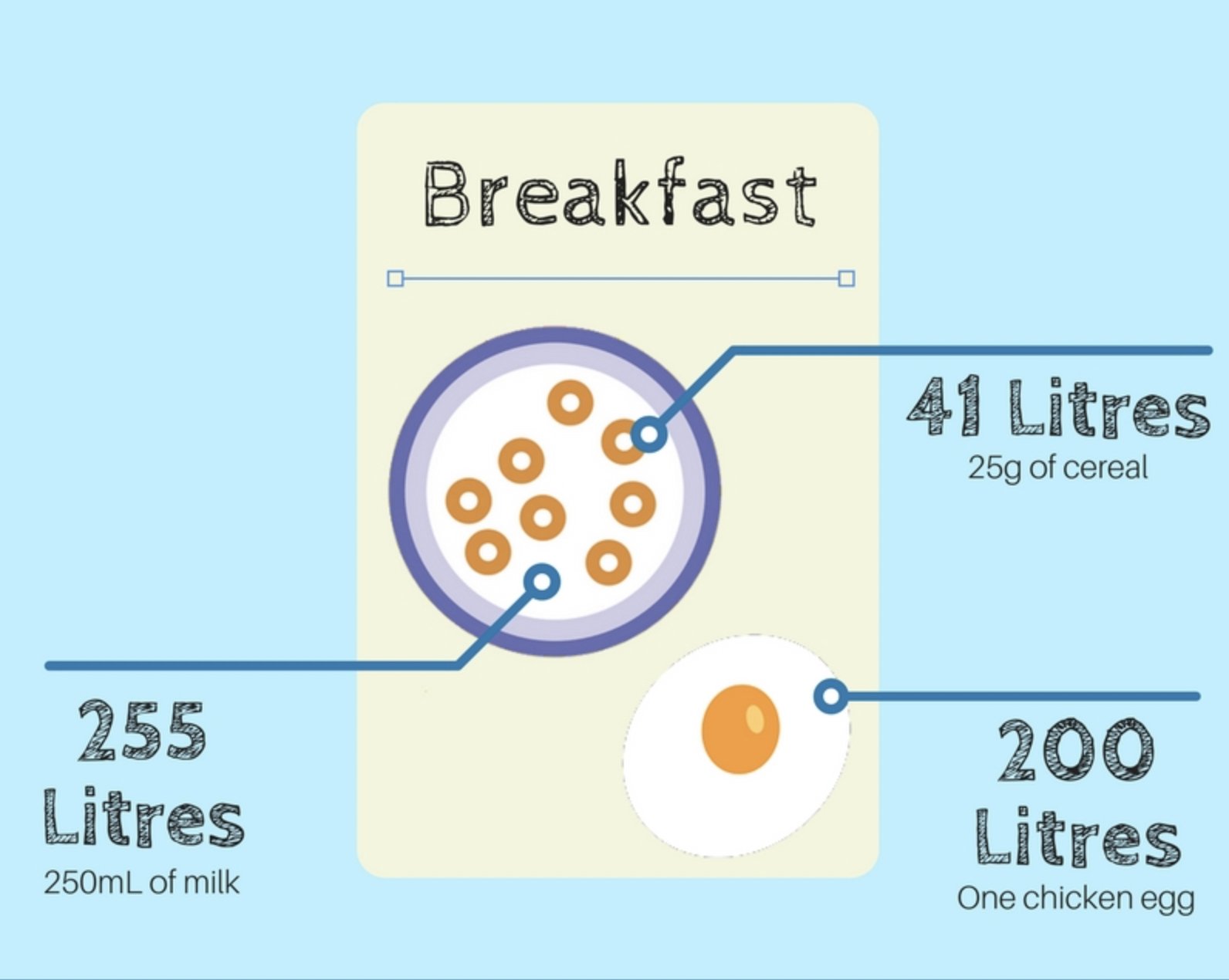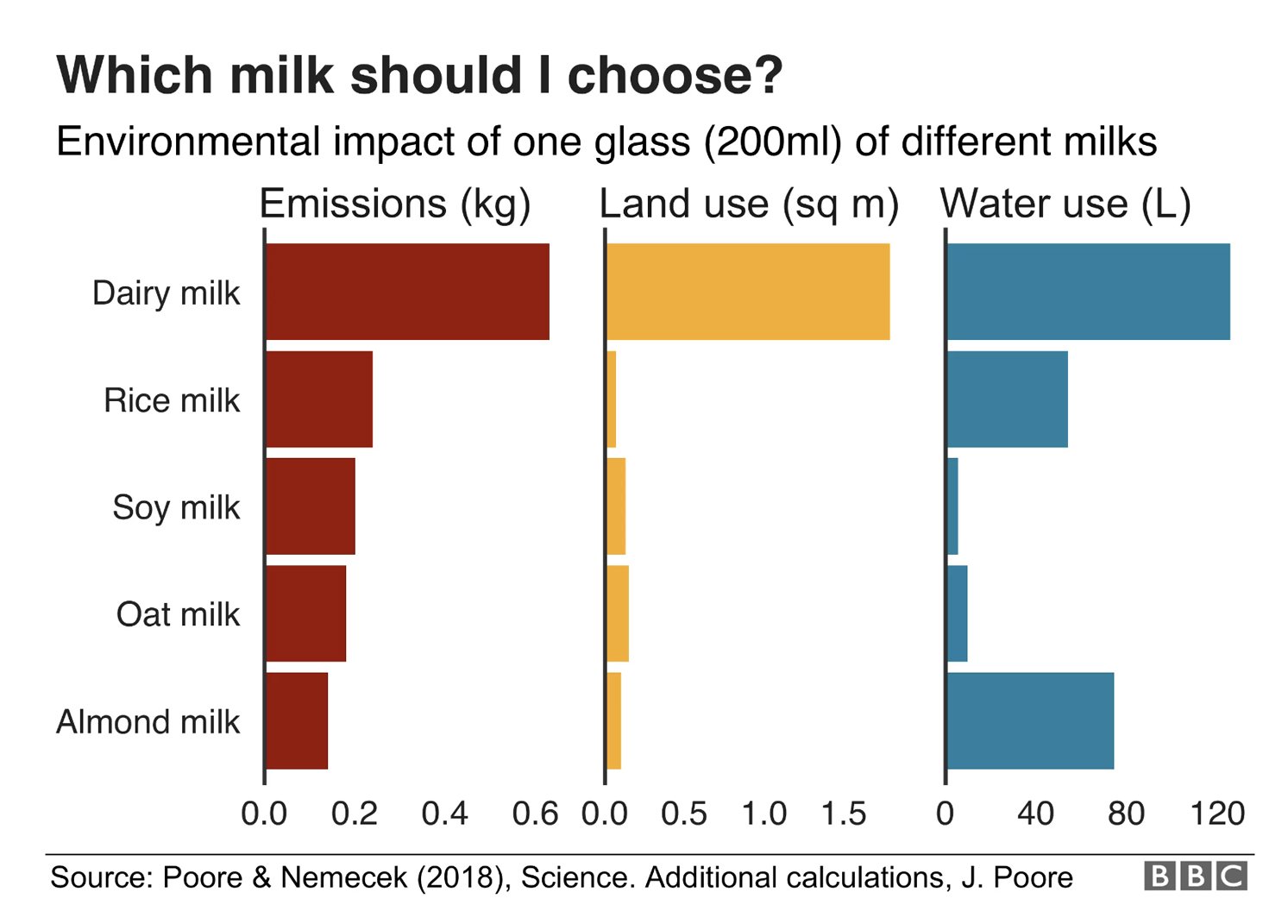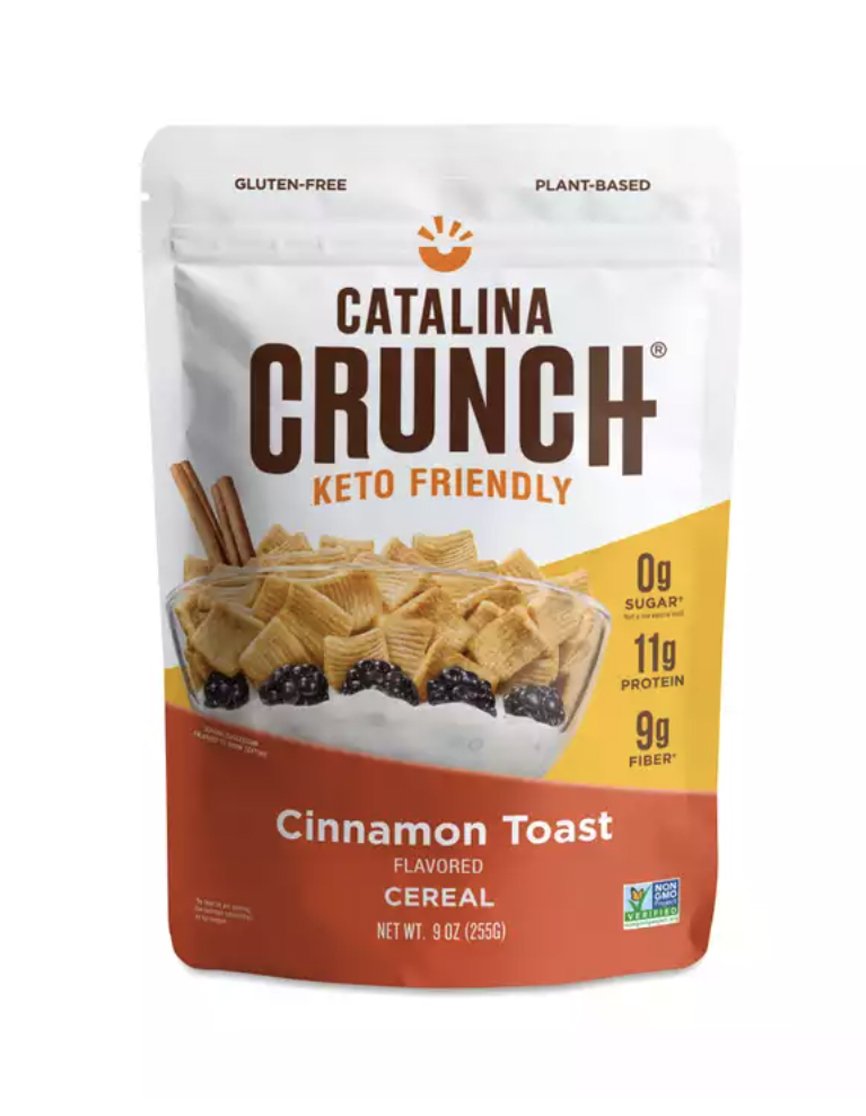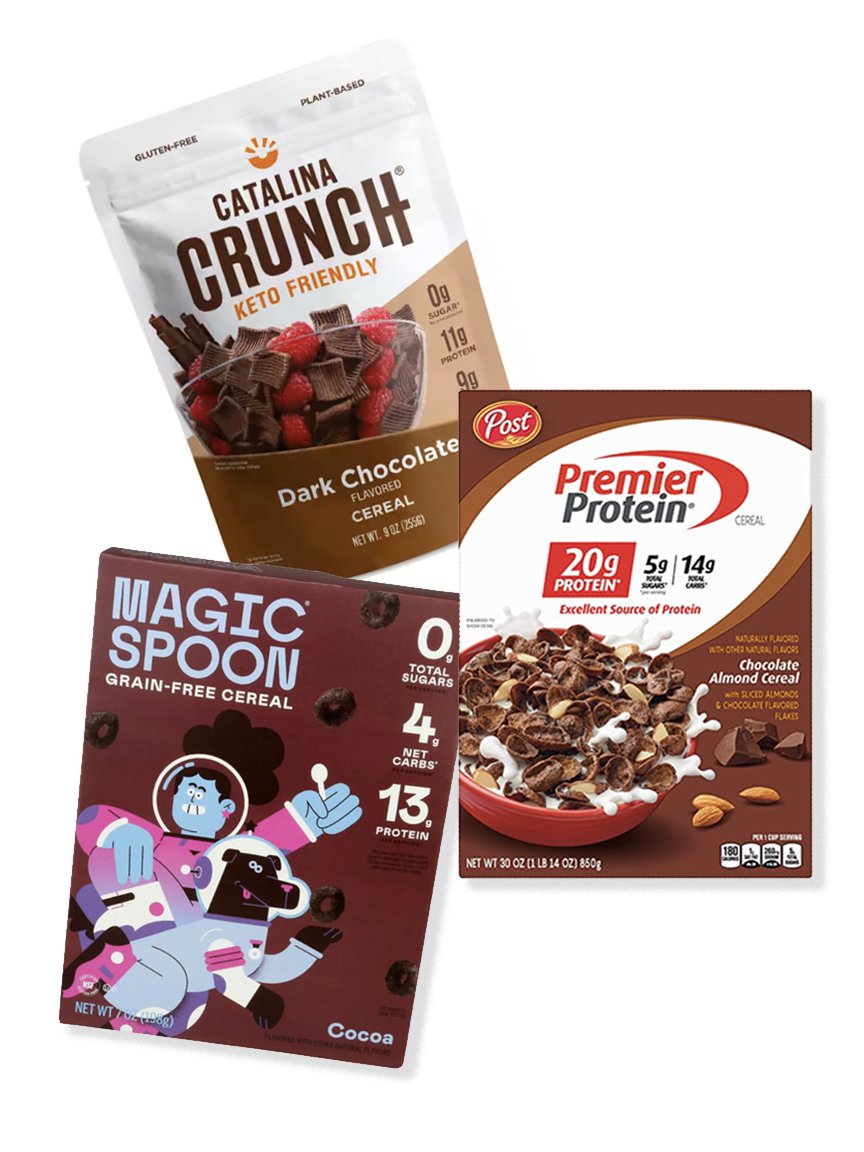The facts
With humble beginnings in 1863, when James Caleb Jackson created the first cereal with dried graham flour dough, to today where annual cereal sales in the USA tops $23B, cereal is distinctly an American breakfast phenomenon. In China, the next largest consumer of cereal, sales are a fraction at $6B. Cereal is convenient, non-perishable and inexpensive, so we choose this grab and go option without even thinking.
• Currently, Cheerios, Cinnamon Toast Crunch as well as Kellogg’s products make up 60% of all consumed cereal.
• Rising prices haven’t dampened Cereal’s popularity. Sales have remained consistent despite an average increase of $2/per box over the last 10y.
• Cereals are primarily grains (corn, oats, wheat etc.) which are processed and flavored to create the ultimate product which we often enjoy in a big bowl of milk.
The big picture.
Every morning we have a choice, “how are we going to start our day?”. For many, grabbing a bowl of cereal is almost automatic. In fact, It is estimated that on average, each person in the USA consumes a little over 15 lbs of cereal/year and 30% of us eat cereal 3 times a week or more. We love cereal–in milk, as a snack, or even as a crunchy coating for chicken. But is cereal a healthy breakfast? For that we have to look at it in multiple dimensions–what it contains, how it is produced, and how it is eaten.
>
“On average, each person in the USA consumes a little over 15 lbs of cereal per year and 30% of us eat cereal 3 times a week or more”
So, is cereal a healthy breakfast… and a kind choice?
To truly understand the impact of cereal, let’s dive into what it contains, how it is produced, and how it is eaten. These clues will give us the tools to make an informed decision for how to start our day.
Cereal Production
The grains used in cereal production are mostly derived from industrial grain farming which in the USA has a pretty dismal track record for environmental impact. Grain farming in America is primarily concentrated around soybeans and corn. Not only does this kind of mono-agricultural practice deplete the soil, but 90% of the grain grown in the USA is used to feed livestock (for beef) and for ethanol, instead of feeding humans. That’s right, less than 10% of all land farmed in the USA is used to feed humans. And while cereal isn’t the worst byproduct of grain farming, the grain industry as a whole is a significant driver of water pollution, soil erosion, biodiversity loss and heat-trapping emissions, adversely impacting the environment, soil and human health. In addition, many of the new cereals on the market are advertised as grain-free, deriving their protein source from animal products.
Cereal Consumption
This topic gets really interesting when we look at the impact of the way we eat our cereal… with a big bowl of cow’s milk. Despite the growth of dairy alternatives, more than 9 in 10 consumers prefer to use dairy milk with their cereal.
Milk production is highly energy intensive and in the case of factory farming, not a humane process. Counter to the natural reproductive cycle, dairy cows are forced to remain pregnant and make milk all year long. The average dairy cow makes 6-7 gallons of milk a day or approx 2100 gallons of milk every year; as compared with the natural cycle of cows where a cow will produce 1 gallon of milk per day, only when pregnant.
Milk production demands a lot of water, in fact it is in the milk where one of the bigger problems in cereal consumption arises!
Image courtesy GetGreenNow
Changing the type of milk we consume is an easy way for us to instantly make kinder choices.
Take a look at this chart showing the impact of switching 1 cup of dairy milk to non-dairy.
Cereal Nutrition
One of the biggest concerns with cereals is their nutritional value. The majority of cereals are processed, refined, and sugar laden. Research has shown that foods high in sugar and/or refined carbohydrates and low in fiber, lead to weight gain and increased risk of diabetes over time. This is particularly relevant since many cereals are marketed towards children. Dietary habits start in childhood and limiting exposure to sugary, empty-calorie foods is critical.
Let’s take a look at the nutritional value of two cereals, both commonly available at all grocery stores, one very popular unhealthy one and another that is much healthier. By reading the labels we can begin to see that a choice that is lower in sugar, higher in fiber, and higher in protein will give us more energy for less calories, a win-win for our bodies.
Cinnamon Toast Crunch
General Mills
(1 cup 41g)
Calories 170
Total Carbohydrate 33g
Dietary Fiber 2g
Total Sugars 12g
Protein 2g
Cinnamon Toast
Catalina Crunch
(1/2 cup 36g, equal weight)
Calories 110g
Total Carbohydrate 14g
Dietary Fiber 9g
Total Sugars 0g
Protein 11g
The choices.
Life-focused
If your focus is on being kind to living things, reducing your dairy footprint by replacing milk with your favorite non-dairy milk will go a long way to help you make a kinder choice.
If you are going to eat cereal, choose nutritionally dense cereal by reading the nutritional label. Look for high fiber, low sugar and optimally some protein. Watch for hidden ingredients like gelatin which are usually cheaply sourced.
Additionally, look for hidden animal byproducts in cereals like Frosted mini-wheats, Lucky Charms and in cereals branded as healthy such as Magic Spoon which has a high dairy content.
Earth-focused
If your focus is on the earth and environment, our recommendation is to buy cereals that are Rainforest Alliance Certified or Fair Trade Certified which will help you choose cereals that have been sourced responsibly.
Grain farming uses 45% of land space in the USA while only 4% actually feeds humans. These farming practices place considerable demand on our natural resources by depleting the soil, increasing water consumption, and producing greenhouse gasses which affect all living things on this planet. .
Certifications are indicative of, but not a 100% guarantee, of being produced in an environmentally and socially responsible way. However, please remember that these certifications are expensive and newer, smaller companies may not be able to afford the certification process.
Holistic
The Perfect Solution is to avoid processed cereals altogether and stick to whole foods.
Using whole cut oats, and other whole grains like quinoa, farro, whole wheat, and amaranth, are great non-processed breakfast cereals which are also kind to earth and others.
This recipe for a dark chocolate quinoa bowl is filling and can be made ahead of time and kept in the fridge for busy mornings.
Overnight oats/muesli which doesn’t even need cooking, is also a great option to replace your bowl of cereal!
How you start your day makes a difference, it is also an opportunity to begin your day with a kind choice. Consider where on the continuum feels right for you and think about what you can do. One step at a time.
Additional resources.
Take a deeper dive.
Product reviews.
Check out this side-by-side review of three popular high-protein cereals to show how to apply the kindness lens when choosing your cereal.
We hope that this is helpful to you, tell us what you think!

